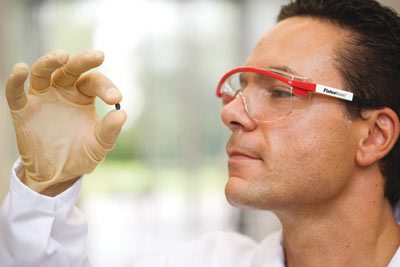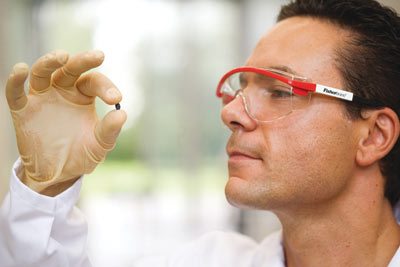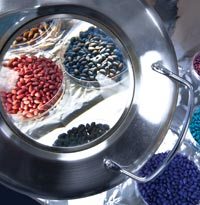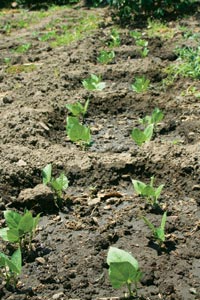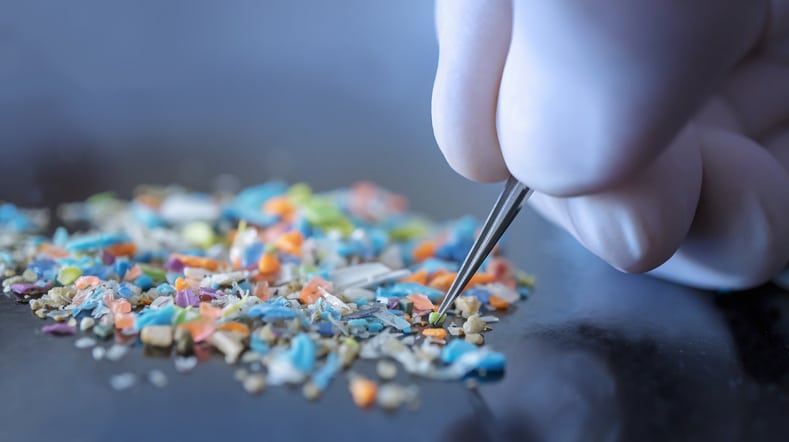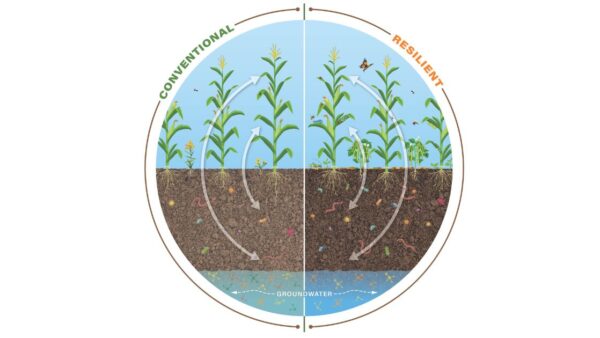Seed Treatment: A Tool for Sustainable Agriculture
Seed treatment technology has come a long way since the use of salt brine in the mid-1600s. Today seed treatments deliver clear environmental, economic and social benefits, making the technology a perfect tool for sustainable agriculture.
With a growing world population, now more than ever it’s critical that farmers have access to the tools that will help them grow more food while protecting the environment. And seed treatments are one of these tools.
“By utilizing modern agriculture technologies, farmers will be able to boost yields, conserve water usage and protect biodiversity,” says Keith Jones, director of stewardship and sustainable agriculture for CropLife International based in Brussels, Belgium. “Seed treatments represent one tool on which many sustainable agriculture technologies rely upon. By protecting seeds from planting to emergence, seed treatments can improve stand establishment and increase potential yield.”
Helmut Schramm, head of the seed treatment business at Bayer CropScience in Monheim, Germany, agrees, saying seed treatments deliver clear environmental, economic and social benefits, making this technology a perfect tool for sustainable agriculture.
“Innovative seed treatment technology represents an environmentally-sound approach to crop protection,” he says. “Treating the seed provides a targeted and effective means of application that helps increase yields, safeguard our environment and ensure a more sustainable means of crop production.”
Over the years, seed treatments have evolved from simply protecting the seed to helping improve plant stand and early plant health.
“Seed treatments are increasingly designed to also enhance plant emergence, growth or nutrition efficiency, which, along with crop protection, lead to a more vigorous and uniform crop,” says Schramm. “This forms the optimal base for a high-quality crop which can fully exploit its yield potential.”
Greg Lamka, chair of the International Seed Federation Seed Treatment and Environment Committee, says that in order to maximize yield, it’s important to have a full and uniform stand. The STEC committee was established in the 1990s to raise the seed industry’s awareness about the use of different seed treatments and to promote a better understanding of how production could be improved and made more efficient. The committee consists of seed companies and crop protection companies who wish to promote the safe and effective use of seed treatment products.
“Growers are paying more for the seed, so expectations are rising about the performance of our products. Seed treatments are a way to ensure that the products will perform to their maximum, based on the environment that they’re put into,” says Lamka, adding that the vast majority of the seed used in developed countries is treated.
The Seed Treatment Advantage
Seed treatments refer to the application of crop protection products directly to seed to protect it from seed-borne and soil-borne pathogens and insects. The time between planting and emergence is the most vulnerable stage of plant development. Once in the soil, the seed is susceptible to damage from insects, pests, bacterial pathogens and fungi. Seed treatments allow farmers to protect against these threats during planting, says Jones.
When possible, farmers plant earlier than they used to in order to maximize yields, and often reduce tillage or decide not to till at all, says Lamka, noting that both of these practices significantly impact the seed bed.
“The earlier a grower plants, the more often it’s going to be cold and wet. The more plant debris that is lying on the surface of the soil, the colder and wetter the seed bed will be, and the more plant disease inoculums that will be present. The colder and wetter the seed bed, the slower the seed will germinate, and the slower it will come up,” he says, adding that this provides more opportunity for fungi to attack and kill seed, or greatly reduce its health. This risk can be decreased by using seed treatments, but it’s up to seed companies selling these products to inform growers on how best to use them.
Seed treatments are also a highly targeted way of applying pesticides, notes Schramm. “Instead of spraying the entire field area, less than one per cent is treated, and so only insects and pathogens that forage on the plants are exposed,” he says. “Therefore, beneficial species and other species that live on and around the plants are protected.” Less product use per area also leads to decreased risk of off-crop drift, which consequently has a reduced impact on species in adjacent areas, he adds.
Lamka agrees, saying that in the past, if growers had a problem with insects or disease, they would make a foliar or granular application. However, when growers use a seed treatment, they end up using less product and are burying the product underground. “So we’ve greatly reduced our impact to the environment by using these very small amounts of focused material as a seed treatment,” he says.
Many of the new chemistries used for treatments are systemic, explains Lamka. They come off the seed coat into the soil, and are absorbed by the seedling through the root system as it grows. These products often protect the seed and the seedling for approximately three weeks after emergence.
Farmers prefer using seed treatments over crop spraying because it is more effective in terms of crop protection, and generates vigorous plants and increased yields, while being more cost-efficient, says Schramm.
“Entire field spraying can be spared, reducing the use of fossil fuels (and the greenhouse gas emissions associated with their use) as tractor operations are no longer necessary,” he says. “So this addresses the economic pillars of sustainability, while complementing the technology’s environmental benefits.”
Seed treatments are an environmentally safe way to protect plants because of the reduced use of active ingredients per unit of land area, says Lamka, who is also the global senior manager of seed applied technologies for Pioneer Hi-Bred in Johnston, Iowa.
“The products are more environmentally safe than they’ve ever been in history. Using seed treatments is a good stewardship practice,” he says.
Seed treatments go back thousands of years, notes Lamka, to when they put salt brine on wheat seed to get rid of certain seed-borne diseases. Years ago, mercury was also used as a seed treatment because it was very effective at killing insects that were attacking the seed, but it’s a toxic product to all living organisms. These early toxic products have been banned and taken off the market.
“Today we’re using much safer products. They are safer for the people handling them, safer for the environment and much safer for the seed itself,” says Lamka.
Stewardship and Education is Key
The seed industry is interested in ensuring seed treatments are properly applied for both the product performance for customers and also for the safety and health of our own employees and farmers, says Lamka.
In 2010, CropLife Canada organized a steering committee to develop a set of commercial seed treatment standards for industry compliance and various members of the seed industry have been involved with the steering committee since its inception. Currently, the draft standards encompass some 77 different protocols of which most are derived from existing regulations related to fire codes, labour codes and label statements, to name a few examples.
Meanwhile, CropLife America and the American Seed Trade Association are working in conjunction with the Environmental Protection Agency to review seed treatment and bag/tag language. “We’re trying to determine what additional seed treatment and bag/tag language would be informative in regards to quality seed treatment application and proper planting of treated seed,” says Lamka.
Overseas, the European Seed Association has sponsored an initiative called the European Seed Treatment Assurance. “They’re looking at an accreditation process for the various seed companies on how to apply treatment,” says Lamka. This will result in a uniform approach to proper seed treatment application.
And many companies, such as Bayer CropScience, have been advancing seed treatment application technologies in cooperation with agricultural machinery experts to ensure high-quality production. Quality standards, analytical methods and certification schemes have also been developed, says Schramm.
Teresa Falk


